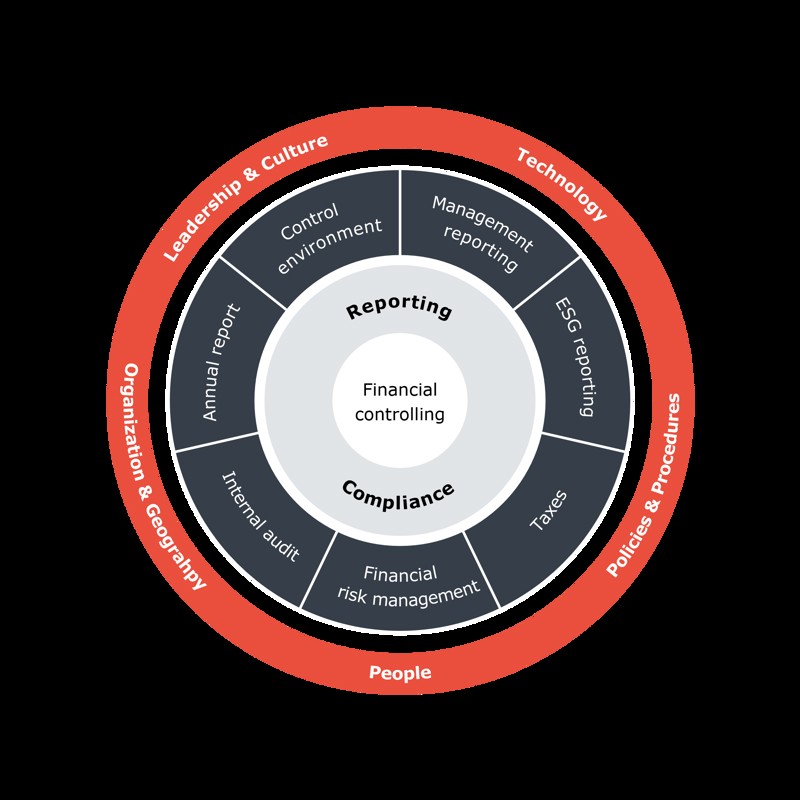Have you ever found yourself in the midst of the year-end closing, encountering unexpected surprises that increased the pressure and workload? By addressing significant risk areas and accounting estimates before the year-end closing, you can both significantly reduce the risk of unexpected adjustments and ease the pressure during the busy month of January. An effective way to accomplish this is through a hard close audit. But what does this actually mean, and how can you best prepare?
The primary purpose of a hard close audit is to clarify significant accounting estimates and other risk areas well in advance of the final annual audit.
In recent years, increased requirements have been introduced for auditors regarding accounting estimates, which in turn increases the documentation requirements for you as a company. By bringing forward part of the audit work to an earlier date, both you as a company and your auditor will have more time to handle complex issues, thereby ensuring a smoother end to the financial year.
Furthermore, a number of sample tests will always be associated with an audit, and a substantial part of these can advantageously be planned and performed during a hard close audit, which will free up more time for all parties in connection with the annual audit.
This article will help you understand how to best prepare for a hard close audit, and highlight potential challenges that may arise if you are not vigilant.
By maintaining focus on what is relevant for you, you can safeguard against unexpected adjustments of material significance that could complicate stakeholder management both internally and externally.
Clarify the scope with your auditor
How can you as a company help ensure that focus is on those areas that might be most relevant to you and your business? Though you generally have no influence on the auditor's definition of the level of risk in individual areas, you can still significantly contribute to planning the process and ensuring relevance and efficiency. Remember that you know your business best. That's why you also have the best prerequisites for assessing the level of detail and complexity in individual areas. With your insight, the auditor can better assess the risk from an audit perspective. By taking a proactive role in planning the hard close audit, you can not only optimise the process but also help create a more efficient and targeted audit.
The scope of a hard close audit will typically include significant accounting items in the income statement and balance sheet where there are substantial accounting estimates.
It would also be natural to include supplemental testing of controls as part of the scope. However, this requires that the controls are properly designed and implemented so they can be assessed as effective for all or parts of the accounting period. Furthermore, they must meet the documentation requirements so the auditor can properly review and evaluate them.
Regardless whether a control-based audit is planned to a greater or lesser extent, it is crucial that for each area in scope, a detailed alignment of expectations regarding the required documentation is conducted, so that any ambiguities or misunderstandings can be clarified from the start.
Focus areas in the income statement
Turnover
Turnover is often one of the most time-consuming areas, as auditing standards – whether under the Danish financial statements act or IFRS – impose significant documentation requirements. This is further impacted if the complexity of recognition is also high. Turnover will, thus, typically be an extremely relevant accounting item to include in the scope and will simultaneously free up considerable time during the annual audit and significantly reduce pressure.
Cost of goods sold
The cost of goods sold and production costs can also be time-consuming and affected by the calculation and valuation of inventory and work in progress. The key point here, as mentioned earlier, is to maintain a good dialogue with your auditor to ensure agreement on the type of documentation and a shared understanding of the process about what should be delivered.
Other external costs
Other external costs often constitute a significant part of the accounts, which may result in a certain number of sample tests. Though this accounting item is not genereally considered complex, it can vary from one company to another. It is, thus, important to assess whether special circumstances require extra attention and could beneficially be discussed with the auditor.
Staff costs
Staff costs are often associated with a lower degree of accounting complexity. However, payroll processing can lead to a higher risk of errors due to multiple data sources and manual processing, just as there will be an inherent high fraud risk for selected employees. Additionally, the use of share-based compensation often involves high complexity, and bonuses may contain significant estimates.
Beyond the documentation requirements themselves, there can be considerable time involved in collecting documentation for individual samples. It is therefore important to take this into account in the overall timeline and plan accordingly.
Focus areas in the balance sheet
Goodwill
Goodwill is considered a significant accounting estimate and is therefore subject to special audit requirements according to the audit standard ISA 540, which requires extremely detailed documentation. If the financial statements are prepared under IFRS, an annual impairment test is required. If prepared under the Danish financial statements act, it must be assessed annually whether there are indicators of impairment. If this is the case, an impairment test must also be performed.
It is recommended to invest time in performing the impairment test, ensuring it closely follows the interpretation guidance of the international accounting standard IAS 36. The auditor will particularly require documentation of forecasts used in previous years compared with the actual figures in the current year, to document the management's ability to budget.
Furthermore, there are documentation requirements for the reliability of data inputs, which include everything from external to internal data, such as whether budgets and strategic plans have been approved by senior management.
It is therefore advisable to clarify the impairment test model with the auditor as early as possible. The commencement of the audit typically depends on you and when you have the underlying documentation in place.
Development projects
Development projects are often considered complex and will typically also be a significant focus area for the auditor. The complexity lies in the recognition requirements, and it is crucial that this complies with the provisions of IAS 38. Additionally, it is important to address the valuation, as this constitutes an accounting estimate and is therefore – as described under goodwill – subject to detailed documentation requirements.
Property, plant and equipment
Property, plant and equipment often constitute a significant part of the total balance sheet in the annual report, which will therefore typically be part of the overall audit scope, including for the hard close audit. Here, it may be relevant to discuss the assessments behind the determination of scrap values and useful lives, which in some cases can be complex and therefore should advantageously be clarified with the auditor.
Trade receivables
Trade receivables are a natural focus for the auditor, as the assessment of their valuation has significant importance for the company's liquidity. Here, it would be relevant to discuss with the auditor which model is used to assess the risk of impairment. Depending on whether you perform the assessment under IAS 39 or IFRS 9, this can be complex and should therefore be discussed in detail with the auditor before the year-end audit..
Share-based payment
Share-based payment comprises remuneration in the form of shares, options and other equity instruments. The recognition criteria are complex and follow the international accounting standard IFRS 2 under IFRS. The rules under the Danish financial statements act only set specific provisions for the recognition of cash-settled arrangements but allow voluntary recognition of equity-settled arrangements according to the provisions of IFRS 2.
It is crucial to clarify the types of arrangements with the auditor as well as their specific requirements regarding vesting, grant and fair value measurement.
Bank loans and covenants
The recognition and measurement of loans is not generally considered complex, as it generally occurs at amortised cost. Instead, there may be special conditions in the loan agreement (covenants) that impose requirements on the borrower. These may include reporting requirements to the bank and often also financial requirements such as the ratio between debt and equity, the level of free cash flows, etc.
We recommend that these matters be clarified with the auditor as soon as possible. Particularly to provide the auditor with assurance that there is no risk of breach of loan covenants, which could potentially increase the risk associated with 'going concern'.
Provisions
The key aspect of provisions is the underlying recognition principles, which we recommend clarifying with the auditor as soon as possible. Provisions can often be complex and, from an audit perspective, associated with increased risk. Examples of these may include warranty and environmental provisions, bonuses, and uncertainties related to ongoing litigation.
What is the optimal timing?
When you have established the scope for the hard close audit, it is important to determine the timing together with the auditor. In addition, it is also relevant to keep the following considerations in mind before making a decision about the timing of the hard close audit:
- How long does the monthly closing take, and are there any specific circumstances that make some monthly closings more time-consuming than others?
- Are there any other internal deadlines that could potentialle overlap and make it difficult to ensure the necessary focus on the audit?
- What capacity is required to have the right employees present during the hard close audit? Are there any typical holiday periods or other factors that may affect the availability of key personnel?
- Does it make sense to perform a hard close audit if the annual audit is already planned for a less busy period in the new year? Perhaps the benefits do not outweigh the additional pressure of having to squeeze in an interim audit in December. If not, this should be discussed with the auditor.
- What internal and external reporting requirements are there from, for example, the board of directors, lenders, etc., and how do these requirements align with the timing of the hard close audit?

The figure illustrates that the foundation of a Finance organisation delivering at a high level of quality and efficiency is comprised of the interaction between management values and corporate culture, technology support, policies, employees, and organisational structure. Furthermore, the figure illustrates the assistance and solid experience that Basico can offer within the area of Finance - Reporting & Compliance'.

What is your next step?
Are you facing a hard close audit and need a sparring partner? Don't hesitate to contact us. We are ready to guide you on which areas you should seek to clarify, the timing thereof, and the year-end closing process in general.

 en
en
 da
da


